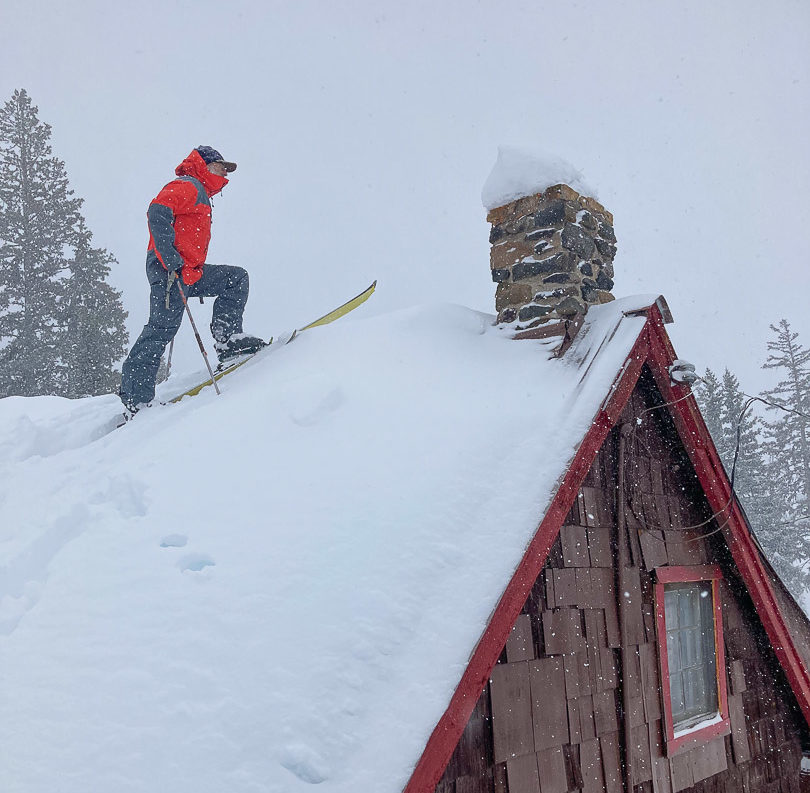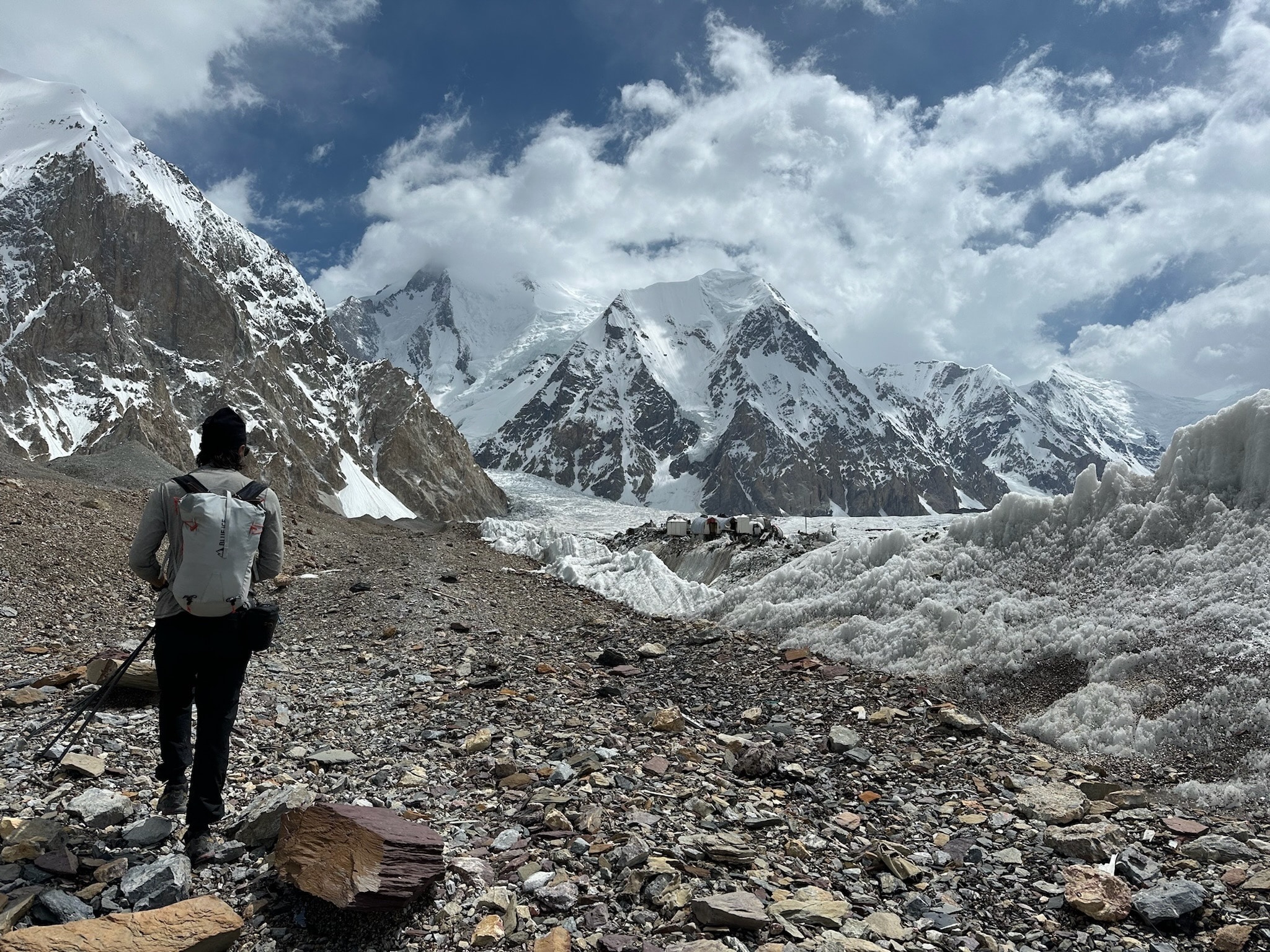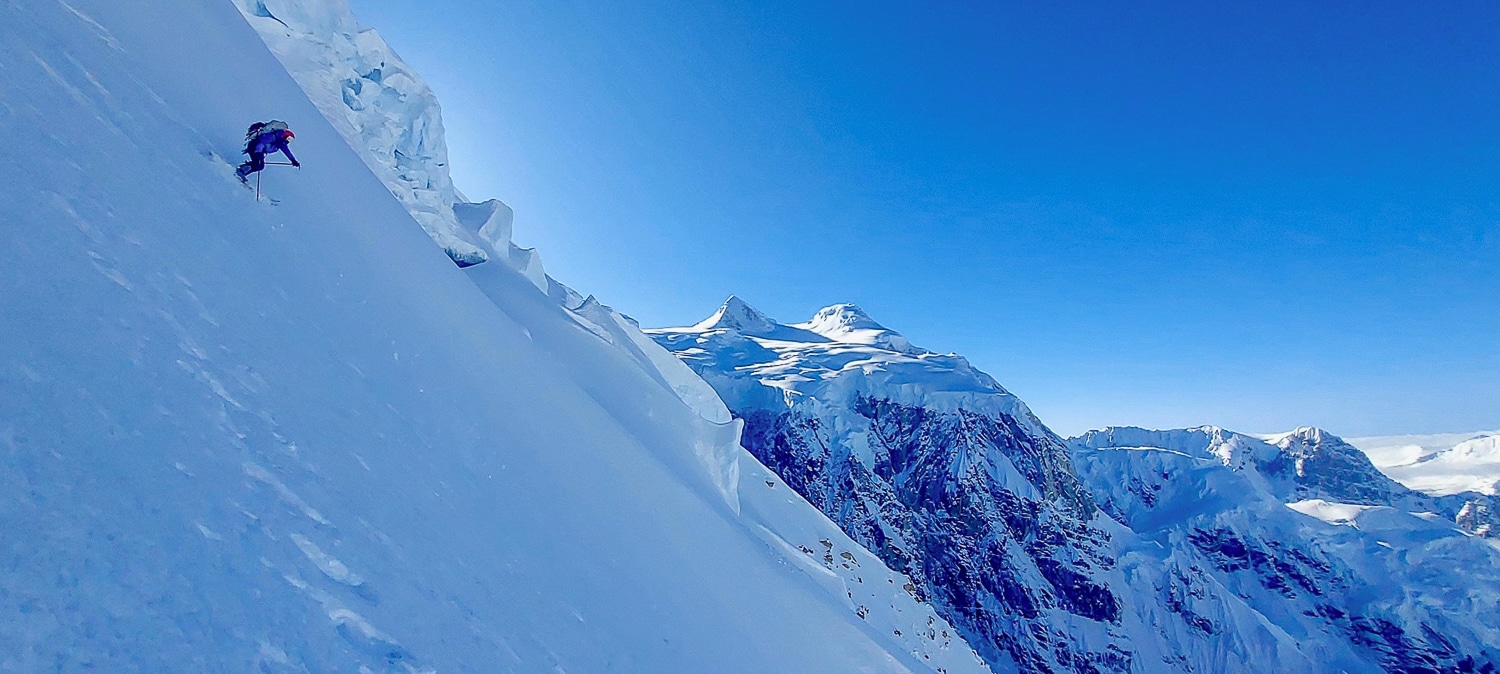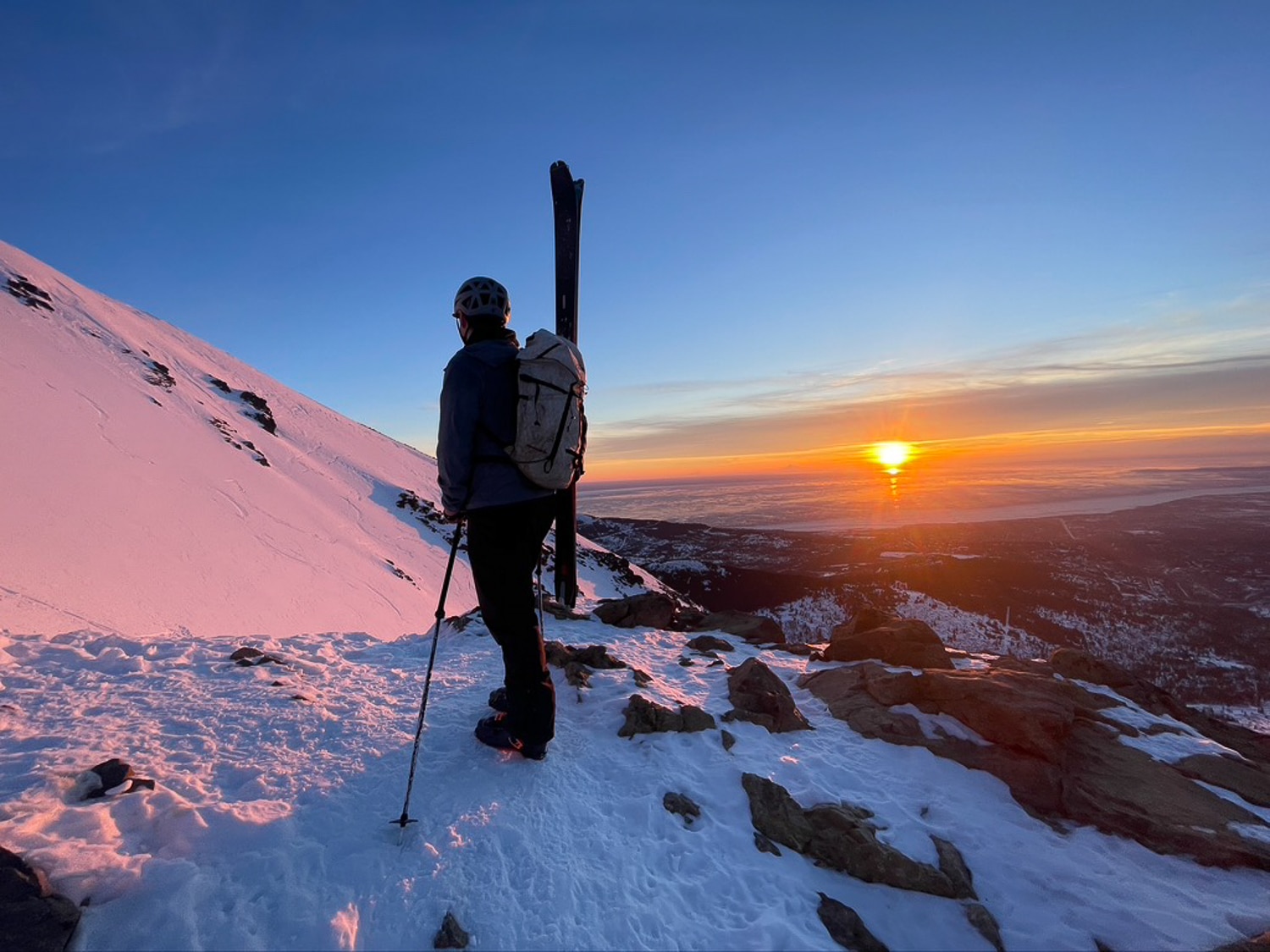Digdeep to think of anything that gets the core community of backcountry skiers more torqued this way or that than discussing risers. It’s the stuff of holy decrees—no middle ground. Ski-specific forums and comment sections are the human behavior gold mine illustrating the depths we’ll go to defend or deride almost imperceptible difference between risers.
But let’s clamp down the volume of the verbal cage fight. First, the pacifist in me says each to their own. I’ll not pontificate on the riser or no riser or the low or high riser schism: in this time of tech binding bounty, purchase a binding with the riser options you like. Mount bindings. Start skinning.
Let’s begin with some mechanical basics when deploying a riser. Imagine you are ascending a moderate skintrack set at 15 degrees. In flat mode (no riser), you’ll have the greatest range of ankle flexion as your stride is longer. Flip a low riser into place, upward progress requires less ankle flexion, and you’ll notice, too, less muscle strain over time. If the skintrack kicks up, this might even require the high riser. Again, even less ankle flexion is required to slide the ski upward, but your weight shifts towards your forefoot, which might precipitate some skin slippage.
There are several solutions to dialing in the proper riser height: it comes down to binding and riser preference, and boot choice.
The Touring Boot Variables
Beefier boots, marketed as downhill-focused freeride boots, often have four buckles and a power strap. Built with more rigid plastic composites, these boots tend to have more friction at the cuff pivot and are stiffer overall, even with buckles loosened and power strap tension eased off. Generally, skinning is more taxing in these heftier boots.
Speed touring boots, boots in the 1 kg class, are likely to employ an upper power strap and single lower buckle or BOA type closure to secure the foot while descending. Even with a stiff carbon cuff, these boots are designed with greater ROM and less friction overall when in tour mode. These designs allow for more ankle mobility and longer and more flow-like skinning strides.
The stiffer boot will likely mandate a different riser deployment strategy to maintain ascending efficiency and bio-mechanical comfort. Here’s an example. On a moderate skintrack, again, around 15 degrees, the stiffer boot requires more force to flex the ankle, which ultimately shortens your stride, and tires you out; this is an opportune time to deploy the low riser.
In the later 1kg class boot, striding and skinning up the same slope feels near friction-free; the ankle flexes properly with less resistance, affording you ample grip and a long stride with no riser deployed.






Leave a Reply
You must be logged in to post a comment.